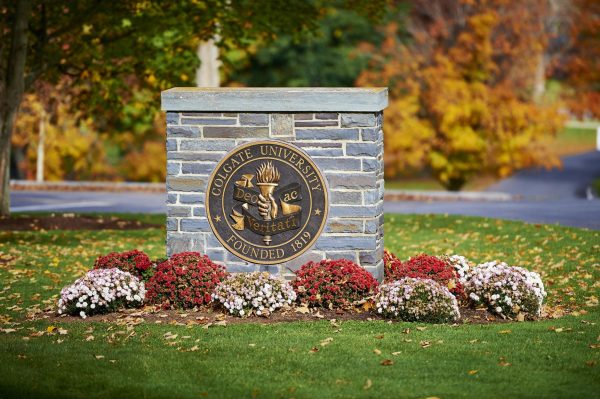Underrepresented States Deserve More Attention
New York, and more generally the surrounding tri-state area, is undoubtedly culturally distinct. Known for its stereotypes of snobbery, fast-paced lifestyles and a lack of small talk, the North East is something you grow to either love or hate.
While I have acclimated to the tri-state way of being, Colgate can feel quite isolating for students who grew up far from New York or experienced a different culture prior to college.
I cannot claim to contribute to the geographic diversity of Colgate. As someone who grew up in Westchester, N.Y., and now lives in Fairfield County, C.T., I am essentially the most stereotypical Colgate student one could find.
However, living in these areas played an instrumental role in my ability to make friends during the first week of college. Seeing as a vast swath of Colgate students hails from similar regions, chances were that if I encountered someone from the tri-state area, we had at least one mutual friend.
In fact, I distinctly remember one of my friends watching in awe as I introduced myself to a stranger and proceeded to find out, mere minutes later, that she was good friends with my neighbor back at home. My friend was stunned, asking me incredulously how I managed to know “everyone” on campus. In reality, I knew hardly anyone, but my hometown allowed me to make connections with the majority of Colgate students right off the bat.
For students who do not live in the tri-state area, or other locations that typically attract Colgate students, such as D.C. or Boston, it is significantly harder to make such immediate connections and take comfort in being reminded of home.
According to 2019 estimates from College Factual, students from New York, Massachusetts, New Jersey and Connecticut made up 56.6 percent of Colgate’s undergraduate student population, despite constituting just four states in the U.S.
This figure may be outdated in consideration of the fact that Colgate received 21,261 applicants for the class of 2026 — more than double the amount of applicants received in 2019 — from 50 states across the U.S., as well as Washington, D.C. This sizable increase in applicants allows for Colgate to procure a more geographically diverse class.
However, simply becoming acquainted with a random group of students on campus would confirm that a majority of students live in areas adjacent to New York, Boston and D.C. For students who live in less represented states, such as New Mexico, North Dakota or Missouri, to name a few, it can feel like a culture shock to arrive at a college where the majority of students are acclimated to lifestyles, fashion and colloquialisms that are unique to a particular area.
It is not entirely the fault of Colgate that the majority of students hail from similar areas. Colgate is a liberal arts university, and the majority of liberal arts colleges are located in the northeastern U.S. When choosing a college to attend, many students are attracted to the ability to live close to home; therefore, it makes sense that the majority of applicants live in the Northeast, restricting Colgate when it comes to selecting a geographically diverse student body.
Despite such limitations, receiving over 20,000 applications is no meager selection for a University that accepts around 2,500 students per year. Furthermore, Colgate has the means to organize programs for students who need extra time acclimating to campus life, such as Office of International Student Services (OISS).
Students coming from less geographically-represented areas should be given similar opportunities to connect with their peers over the summer. While I had the advantage of knowing four incoming first-years from my high school, many students do not have such connections. For students who live in states unique to the Colgate student body, being assigned an upperclassman from a similar area to contact over the summer with any questions, concerns or advice would level the playing field and allow these students to have a sense of belonging and familiarity before stepping foot on campus.
When addressing issues of diversity, geography is not the first on the list. For Colgate in particular, matters of race, socioeconomic class and equitable opportunities in education should take precedence over curating a class with all 50 states represented. However, geography is an important factor in Colgate’s overall diversity, and ensuring that students from less-represented states feel welcomed is crucial in terms of creating a cohesive and positive learning environment.












